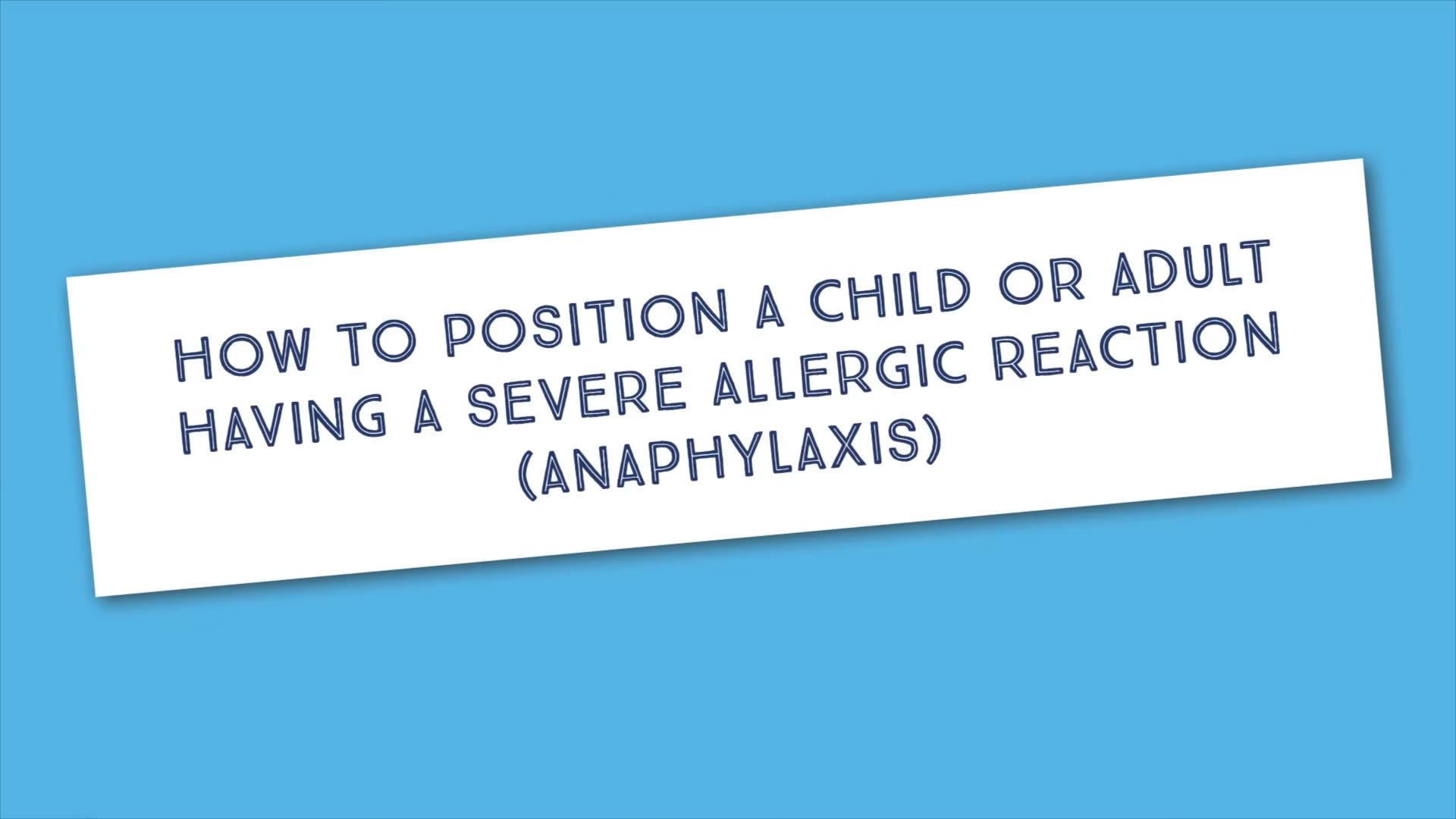Using your EpiPen® or Anapen®
Listen Now
Top Tips
- Practice using your EpiPen® or Anapen® trainer device regularly.
- Your ASCIA Action Plan will show you when and how to use your EpiPen® or Anapen®.
- If you are having an allergic reaction – DO NOT stand or walk.
- If you have ANY of the signs of anaphylaxis – use your EpiPen® or Anapen®.
- If in doubt – use your EpiPen® or Anapen®.
It Is Important That A Person Having An Allergic Reaction Does Not Stand Or Walk
Anaphylaxis is potentially life threatening, so placing the person in the correct position and along with giving adrenaline, without delay, can save the person’s life.
Laying the person flat will help blood flow to the heart which improves blood pressure.
Standing can make anaphylaxis worse by causing blood pressure to drop
This short video explains how to position someone having an anaphylaxis.
Adrenaline injectors available in Australia
Two adrenaline injectors are available in Australia – EpiPen® and Anapen®. EpiPen® and Anapen® are both adrenaline injectors containing a single fixed dose of adrenaline, however they are administered differently.
EpiPen is available in 150 microgram and 300 microgram doses.
Anapen is available in 150 microgram, 300 microgram and 500 microgram doses.
Older teens and young adults should speak with their doctor about what device and dose is most suitable for them.
These illustrations and short animations show how to give each adrenaline injector.
How to give an EpiPen®
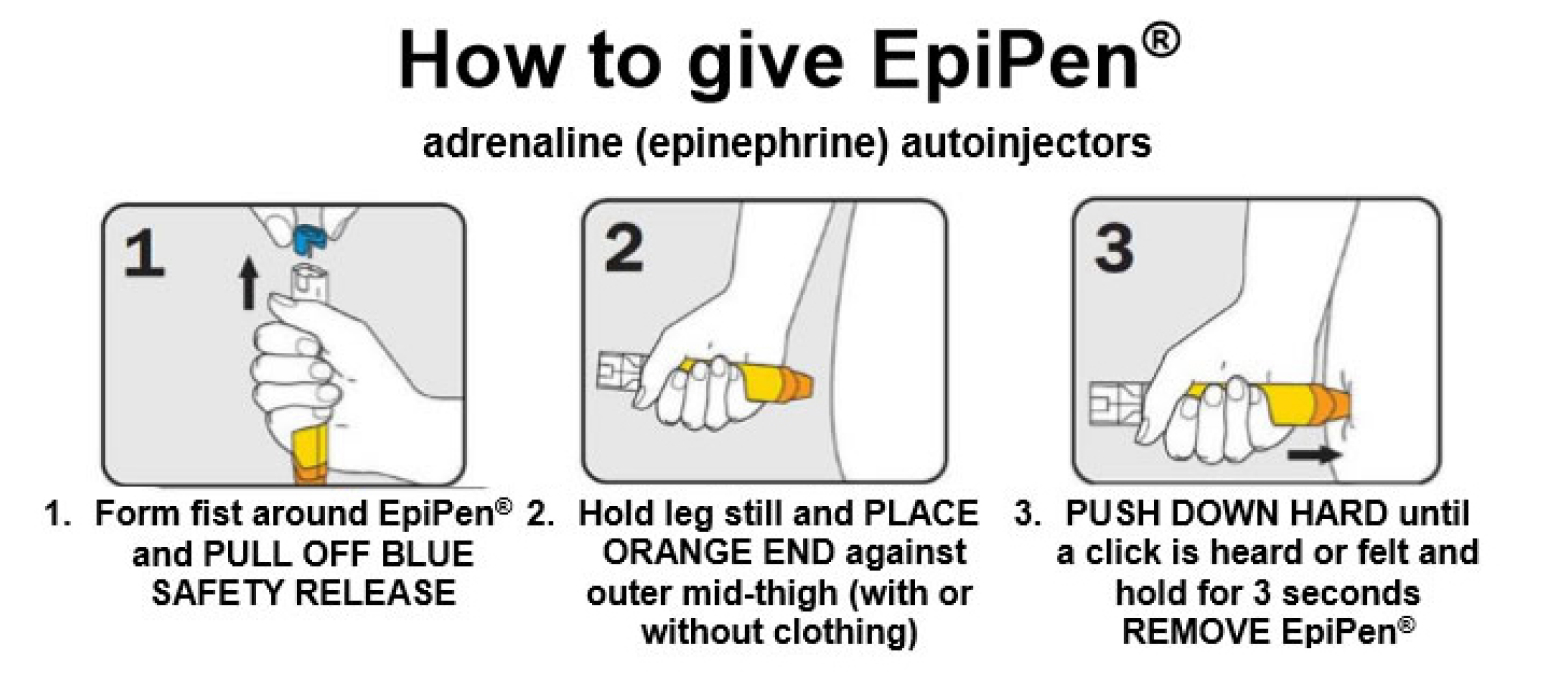
How to give an Anapen®
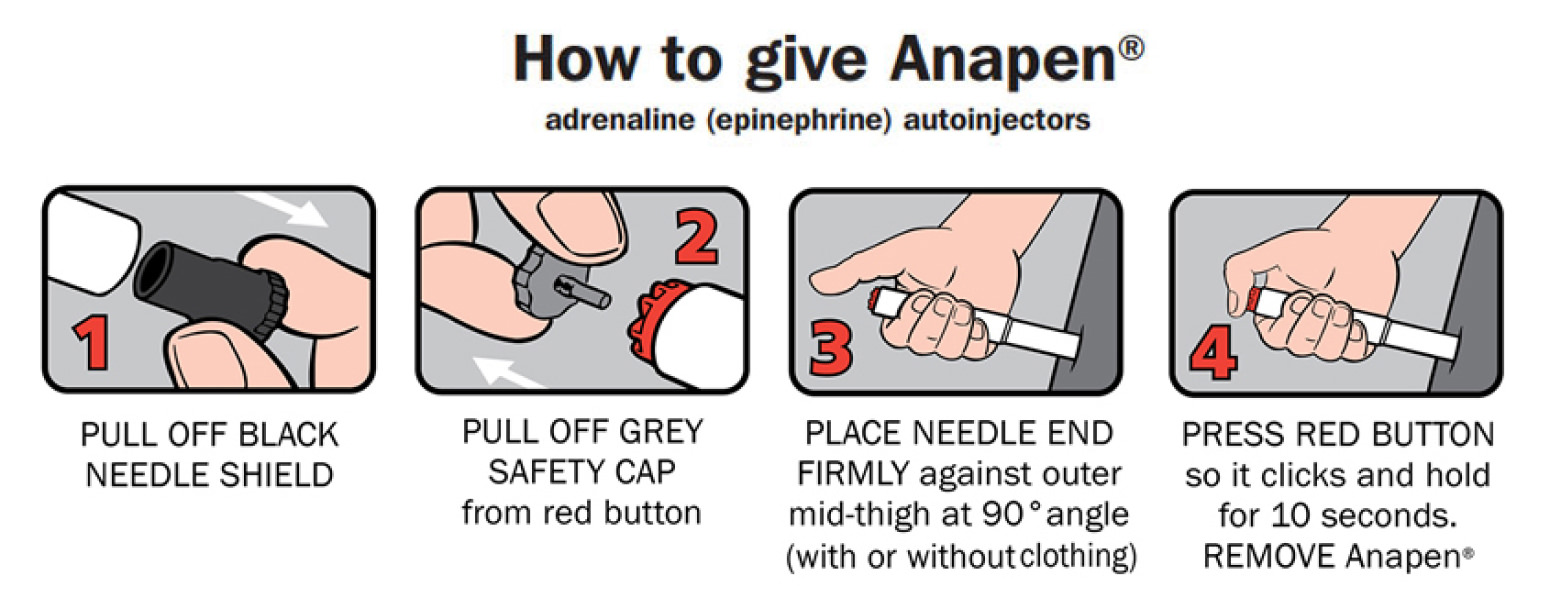
When to use an adrenaline injector
Knowing how and when to use the adrenaline injector is something many people struggle with.
If you are experiencing one or more of the following signs of anaphylaxis — use your adrenaline injector.
- Difficult/noisy breathing
- Swelling of tongue
- Swelling/tightness in throat
- Difficulty talking and/or hoarse voice
- Wheeze or persistent cough
- Persistent dizziness or collapse
- Pale and floppy (young children)
Using an adrenaline injector is the best treatment for anaphylaxis.
Used your adrenaline injector – what’s next?
LIE STILL. DON’T WALK OR STAND.


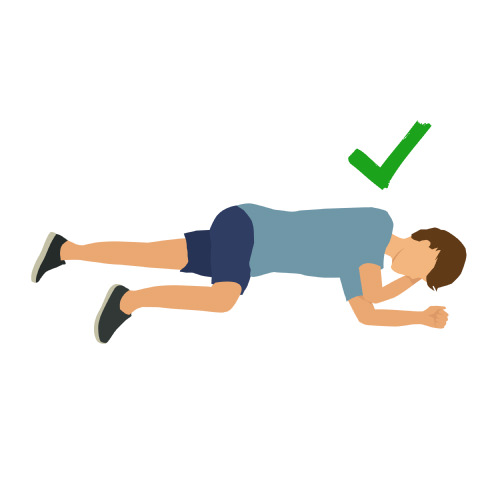
IF YOU’RE FINDING IT HARD TO BREATHE, SIT ON THE FLOOR WITH YOUR LEGS OUT IN FRONT OF YOU.
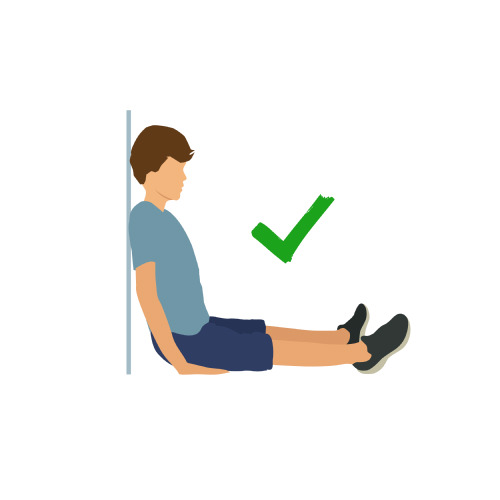
Call an ambulance (dial 000). Tell them you’re having an anaphylaxis and have been given the adrenaline injector.
Get someone to write the time that the adrenaline injector was administered on the device, and hand the used devices to the paramedics.
Remember, you a second EpiPen® or Anapen® can be given (if you have one) after 5 minutes if you still feel faint or have difficulty breathing.
GO TO THE HOSPITAL BY AMBULANCE
Don’t walk to the ambulance — ask for a stretcher.
STAY UNDER OBSERVATION FOR AT LEAST 4 HOURS.
Some people feel better but suddenly become unwell again. This is called a ‘biphasic reaction’
Before leaving hospital, get a prescription for a new adrenaline injector EpiPen® or Anapen® and stay with family or friends for the next day or two. Make sure you fill the prescription as soon as possible so you have an adrenaline injector on hand.
Once recovered, go and see your allergist to discuss the cause of your reaction and how you managed the emergency.
Carrying your adrenaline injector
Handbags, man bags, school bags or small backpacks are great ways to carry your EpiPen® or Anapen® and ASCIA Action Plan for Anaphylaxis yourself.
Or you can buy a waist belt for under your shirt, or a leg holster for around your ankle.
Some ideas include:

It is important that your adrenaline injector is not left in the car or in direct sunlight as this affects the adrenaline. It also shouldn’t be stored in the fridge or directly against a freezer block as this can affect the injector mechanism.
This short but graphic video shows a teenage girl who chooses not to take her EpiPen® when she goes out with friends.
This video may be distressing for some people. You might want to watch this video with a family member or friend.
Need Help?
If you need help, contact the organisation below.
Allergy & Anaphylaxis Australia
- 1300 728 000
- This support line is not an emergency helpline. Please call 000 for ambulance in an emergency.
- Send an email
